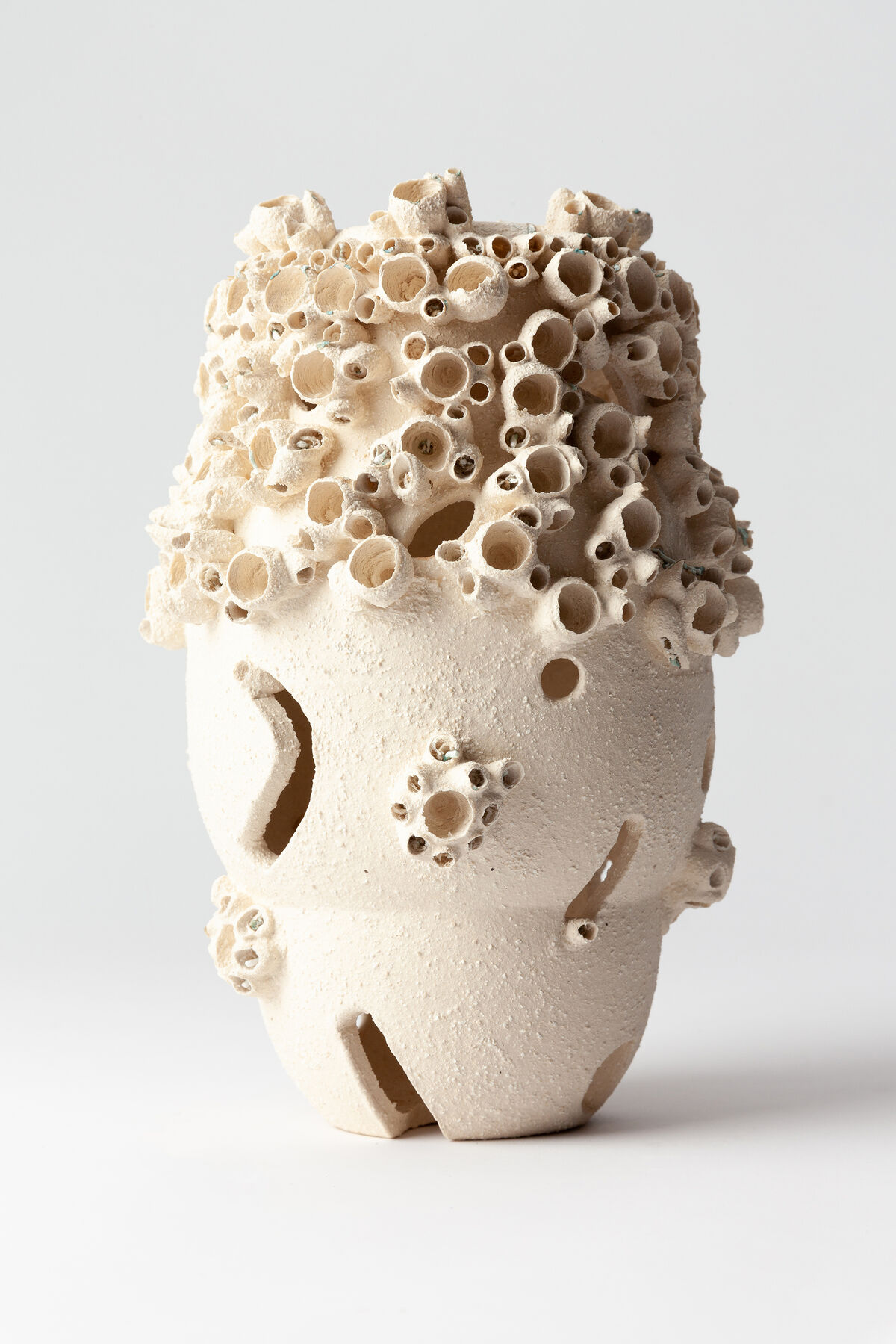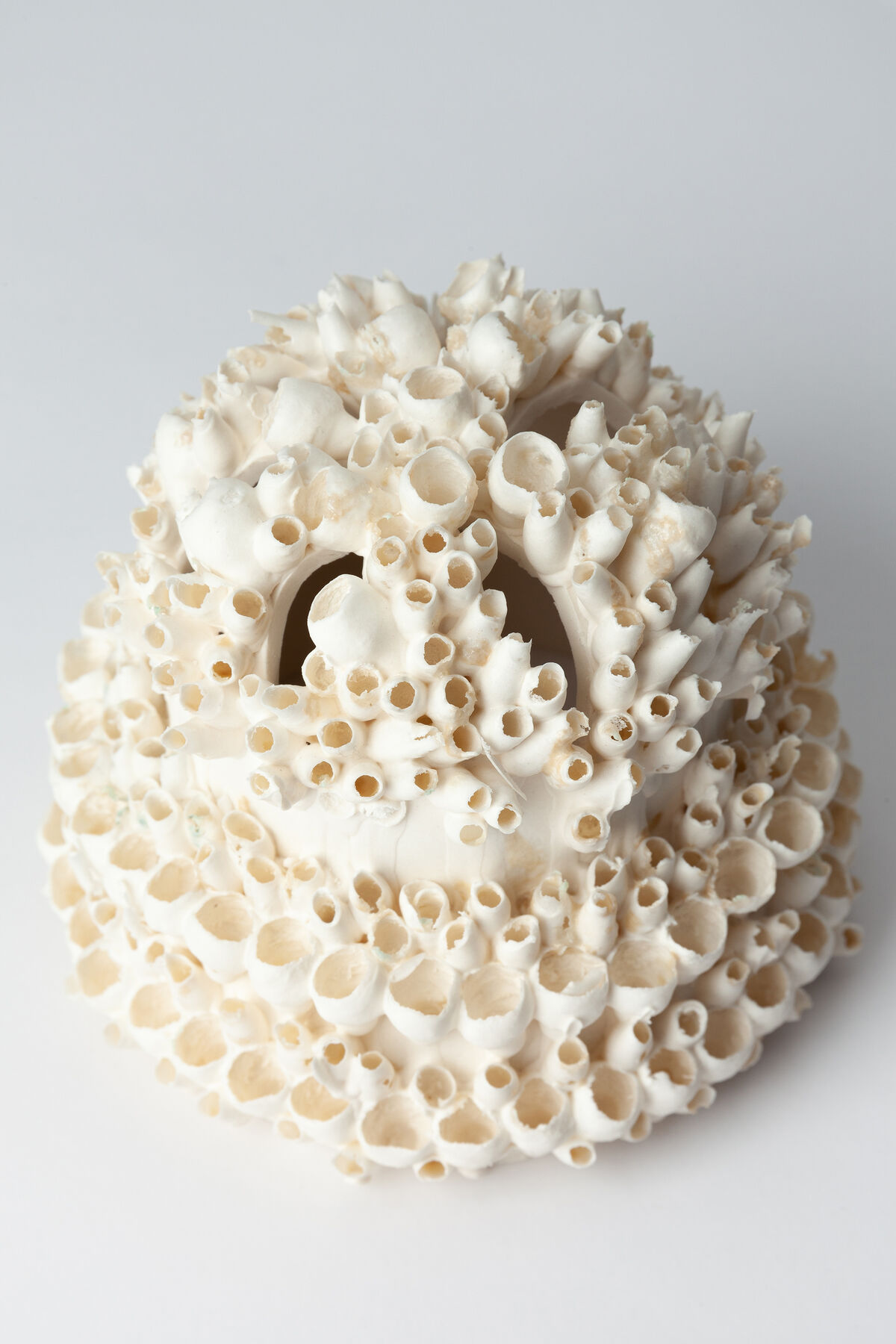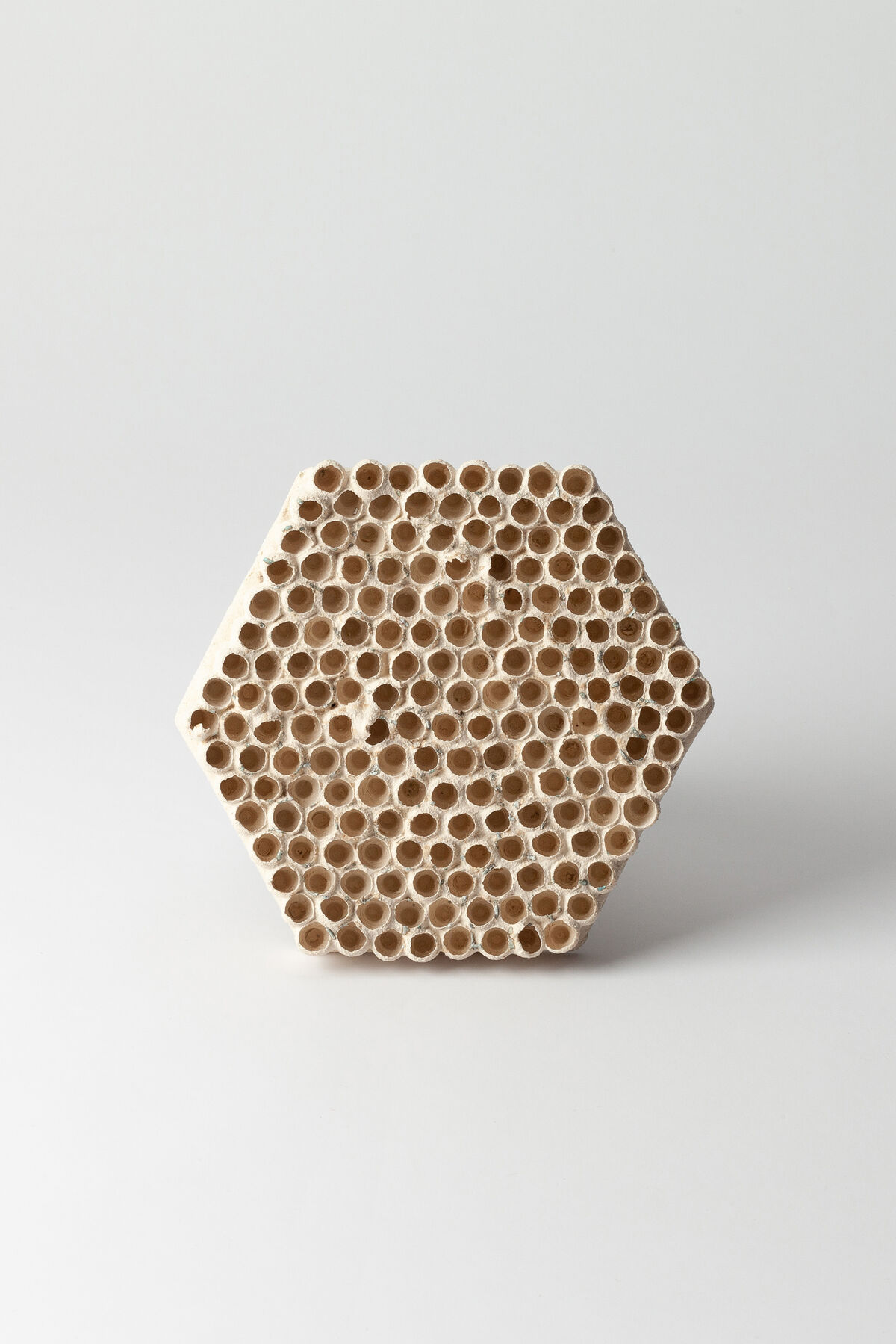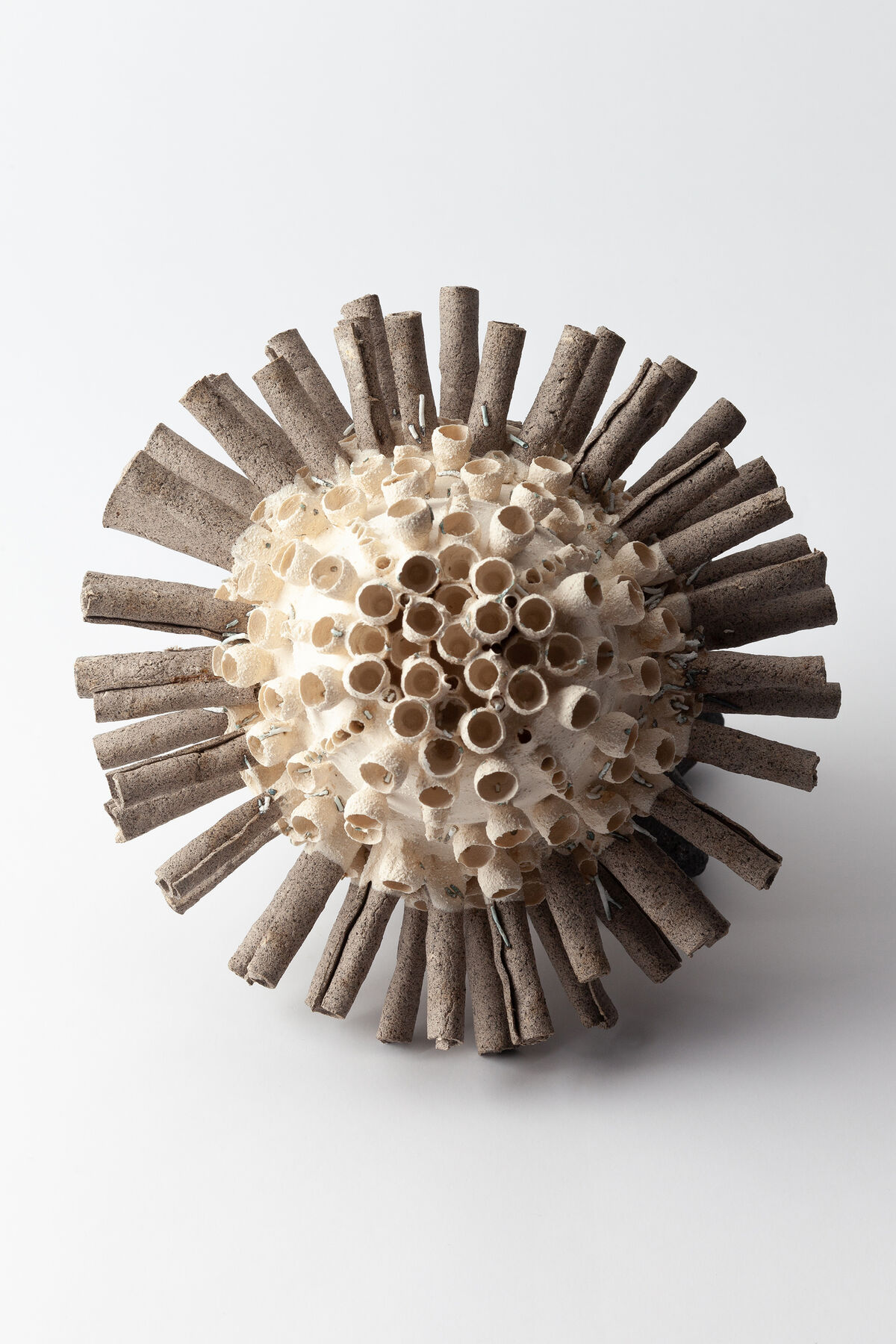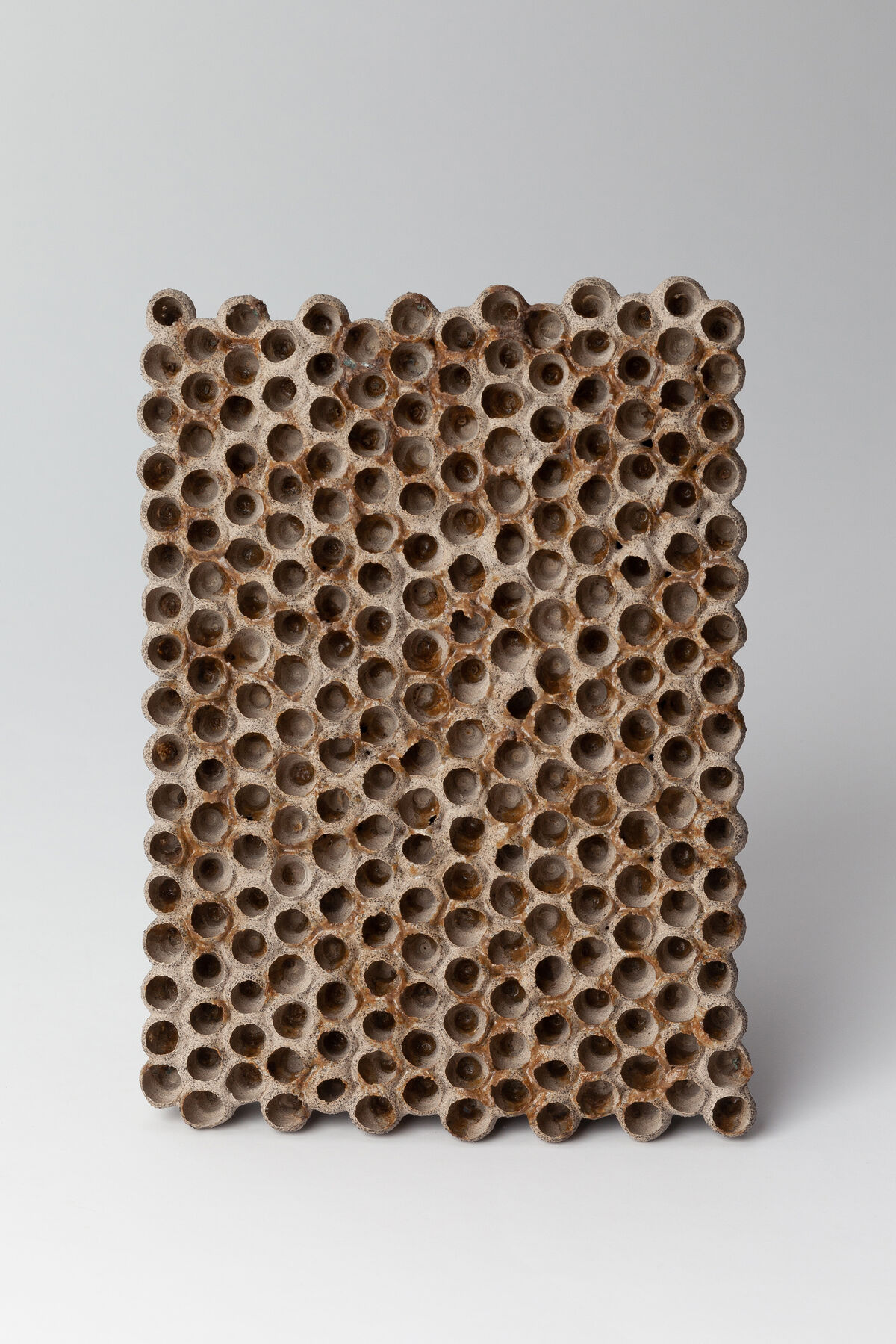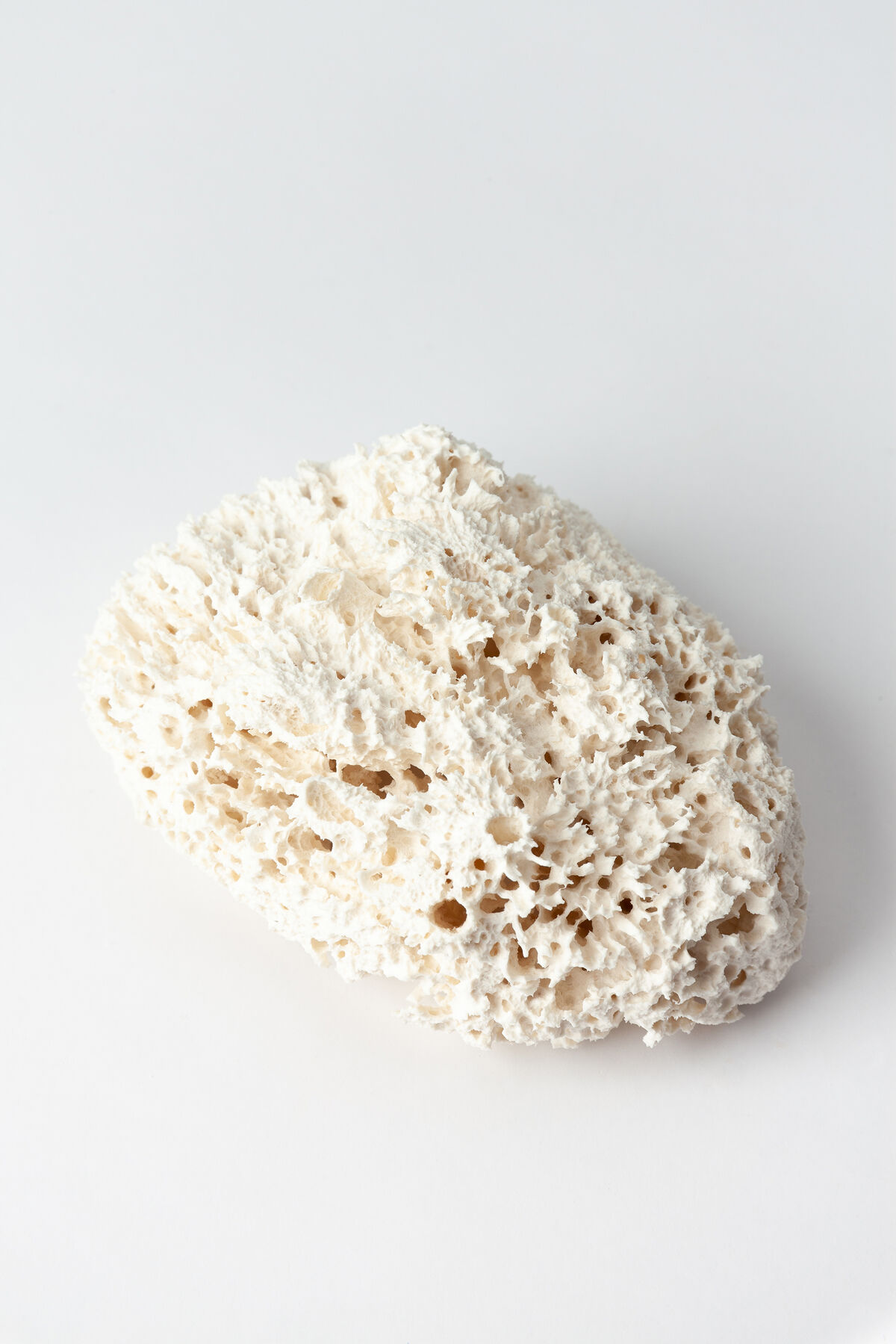The balance of ecosystems can be severely affected by encroaching urbanisation, especially in ways that are invisible to the naked eye. The aim of this project was to use ceramic techniques and processes to create new spaces or substrates for wildlife to take over, grow on and thrive in environments that are low in biodiversity.
Organic materials and clay were combined and used to explore the possibilities of creating shapes inspired by nature, for nature. A wide variety of experiments were conducted with different organic materials combined with clay. Some of the materials used were cotton buds, beans, wool, newspaper pulp, popcorn, natural sponges and paper straws amongst other things. The pieces were then fired, leaving only the clay.
The future of our planet depends on interdisciplinary collaboration. Artists, designers, and scientists can all learn from each other and work together towards solving the current climate crisis. This project is an example of how two supposedly polar opposite disciplines can be combined towards a common goal.
Plans are underway to have similar pieces set up in the tanks at the “Water in Icelandic Nature” exhibition by the Museum of Natural History of Iceland in Perlan (Reykjavik). They will be monitored to evaluate their effectiveness in providing a new platform for both flora and fauna to thrive on.

